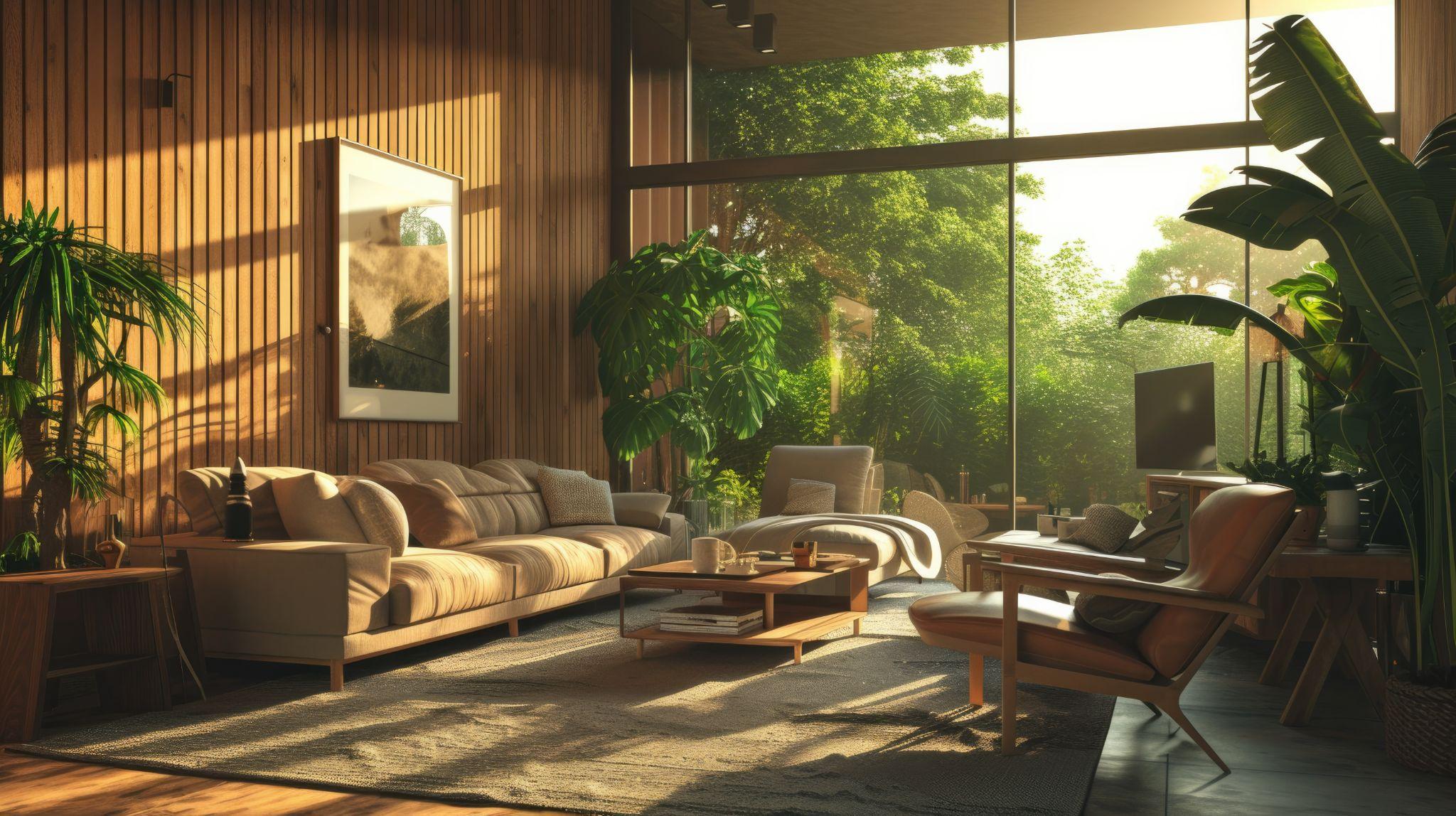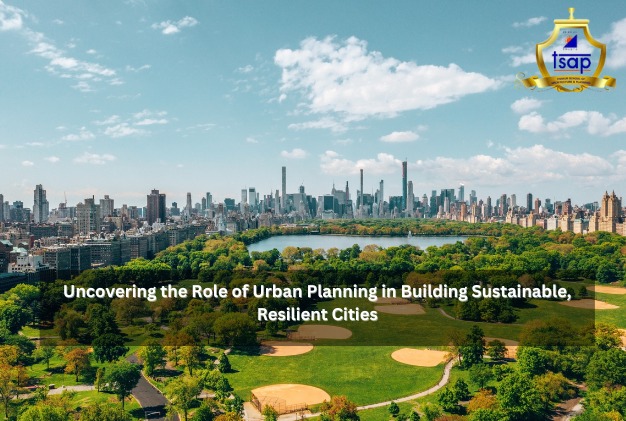
Understanding Carbon Footprint
The term “carbon footprint” refers to the amount of carbon dioxide ( CO2 ) emissions produced by a particular activity or entity. Increased CO2 emissions contribute significantly to global warming and climate change. The carbon footprint is measured in tonnes of CO2 produced.
Carbon Footprint in Homes
When considering the houses we live in, the carbon footprint includes two main components:
-
Embodied Energy
This is the energy consumed during the construction of the structure.
-
Operational Energy
This is the energy required for the day-to-day operation of the house.
These two factors significantly contribute to the emission of greenhouse gases. It’s important to note that carbon emissions are not limited to the construction phase; they also arise from subsequent renovations and redecorations.
The Impact of Interiors on Carbon Emissions
It has been widely reported that the building and construction industry accounts for about 40% of the world’s carbon emissions. Traditionally, interiors were thought to contribute only a small part of this percentage. However, a recent report by the Carbon Leadership Forum (CLF) and Seattle-based LMN Architects reveals a different picture: over the lifespan of an average building, the carbon footprint of its interiors can equal, if not exceed, that of the structure’s construction.
For example, once a structure is built, its carbon emission might remain around 40%. However, repeated renovations of interiors can surpass the carbon emissions of the initial construction.
Strategies to Reduce Carbon Emissions in Interiors
1. Designing for Energy Efficiency
Choosing the right colors can significantly reduce energy consumption for lighting. Lighter colors reflect more light, while darker walls and furnishings require more artificial lighting. Using reflective surfaces can increase the amount of light in a room, reducing the need for artificial lighting.
HVAC systems, which regulate a building’s internal environment, contribute to 40% of carbon emissions. While it may not be feasible to eliminate mechanical systems entirely, reducing their loads and ensuring regular maintenance can help maintain efficiency. Placing heavy machinery in insulated environments during construction also enhances efficiency.
2. Designing for Waste Reduction
Interior designers can help reduce the depletion of natural resources and divert waste from landfills by opting for synthetic materials made from recycled waste or those that can be renewed/recycled at the end of their life cycle. For instance, steel is the most recycled material used in construction, reducing the need for new resources.
Effective waste management both on and off the construction site is crucial. Avoiding the transportation of construction waste can reduce carbon emissions, and reusing scrap materials as fillers can further minimize waste.
3. Designing for Longevity and Flexibility
To prevent materials and products from being discarded too often, interior designers should consider the lifespan of any material they plan to use, especially those subject to wear and tear, such as flooring. The goal is to design durable and timeless spaces, suppressing the urge to change the entire design frequently.
4. Designing for a Healthy Environment
Indoor air pollution results from products and materials with high levels of toxic emissions. Designers should look for materials with low emissions of volatile organic compounds (VOCs) and other air pollutants. Using indoor plants can improve air quality by producing more oxygen and absorbing harmful gases like CO2 and formaldehyde. However, selecting the right indoor plants is crucial to avoid mold and allergies. Examples of air-purifying plants include:
- ZZ Plant (Zanzibar Gem)
- Rubber Plant (Ficus Elastica)
- Areca Palm (Dypsis Lutescens)
- Monstera (Monstera Deliciosa)
5. Designing for Low Environmental Impact
From a sustainability perspective, it’s essential to choose materials and products with the lowest environmental impact. Organic materials like wood, wool, and natural stone are ideal, but sustainable materials such as bamboo, rattan, jute, terracotta, and cork are also excellent choices.
Energy-efficient designs can be graded through LEED (Leadership in Energy and Environmental Design) certification. Using climatically responsive materials reduces thermal loss, promoting low carbon emissions, and choosing locally available materials minimizes transportation emissions.
Conclusion
Educating people on the harmful effects of carbon emissions due to interiors is crucial. Interior designing has become an essential field in creating sustainable and environmentally friendly living spaces. By taking steps toward sustainable design, we can create a better future for our planet. Moreover, the interior design industry offers significant growth opportunities, making it a promising career choice.
Aspiring designers can learn these vital interior designing strategies, ensuring they are well-prepared to make a positive environmental impact.
At TSAP, or Thakur School of Architecture & Planning , we create interior designers of the future. Our comprehensive curriculum and focus on sustainability prepare students to lead the way in innovative, eco-friendly design. A career with TSAP means being part of a forward-thinking institution that prioritizes the well-being of our planet while providing ample growth opportunities in the dynamic field of interior design.
TSAP: Thakur School of Architecture & Planning
TSAP, or Thakur School of Architecture & Planning, is one of the Top Institute of Interior designing in Mumbai. It plays a pivotal role in educating future architects on sustainable design practices. By incorporating these strategies into their curriculum, TSAP ensures that its students are well-equipped to tackle the challenges of reducing carbon footprints in interior design. Through innovative teaching methods and a strong focus on sustainability, TSAP is contributing significantly to the development of eco-friendly architectural solutions.
Recent Posts
-
 The Changing Role of Architects in Corporate-Based Real Estate Firms25 Mar 2025
The Changing Role of Architects in Corporate-Based Real Estate Firms25 Mar 2025 -
 Uncovering the Role of Urban Planning in Building Sustainable, Resilient Cities18 Feb 2025
Uncovering the Role of Urban Planning in Building Sustainable, Resilient Cities18 Feb 2025 -
 How TSAP is Revolutionizing Design Education with UGC Autonomy14 Jan 2025
How TSAP is Revolutionizing Design Education with UGC Autonomy14 Jan 2025 -
 Green Architecture in India: Sustainable Urban Growth18 Dec 2024
Green Architecture in India: Sustainable Urban Growth18 Dec 2024 -
 The Role of Technology in Shaping Modern Architecture: Innovations Driving the Future of Design18 Nov 2024
The Role of Technology in Shaping Modern Architecture: Innovations Driving the Future of Design18 Nov 2024